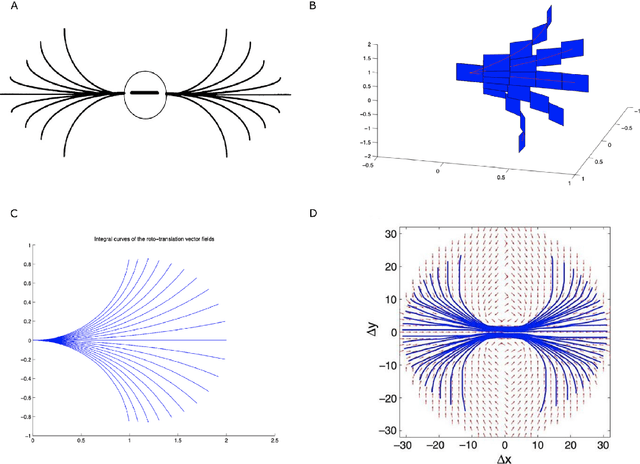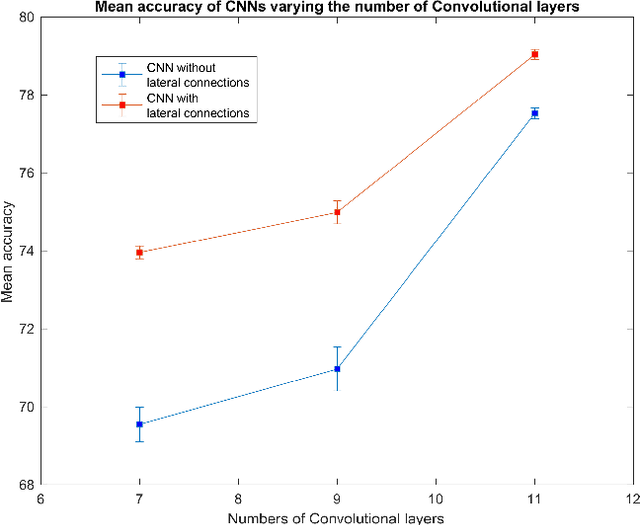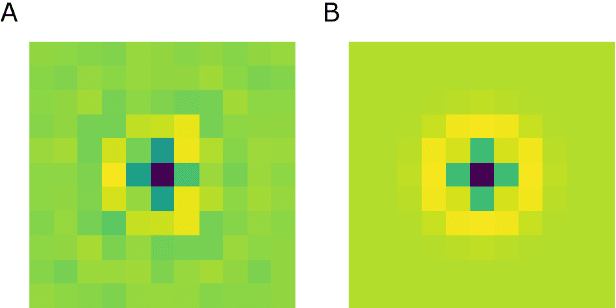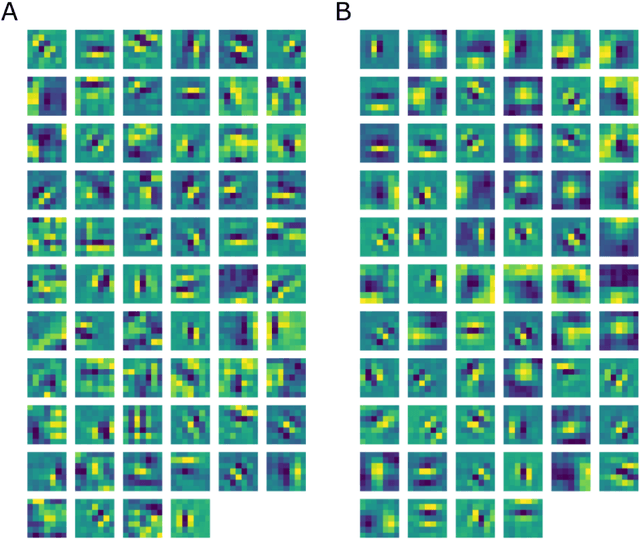Emergence of Lie symmetries in functional architectures learned by CNNs
Paper and Code
Apr 17, 2021



In this paper we study the spontaneous development of symmetries in the early layers of a Convolutional Neural Network (CNN) during learning on natural images. Our architecture is built in such a way to mimic the early stages of biological visual systems. In particular, it contains a pre-filtering step $\ell^0$ defined in analogy with the Lateral Geniculate Nucleus (LGN). Moreover, the first convolutional layer is equipped with lateral connections defined as a propagation driven by a learned connectivity kernel, in analogy with the horizontal connectivity of the primary visual cortex (V1). The layer $\ell^0$ shows a rotational symmetric pattern well approximated by a Laplacian of Gaussian (LoG), which is a well-known model of the receptive profiles of LGN cells. The convolutional filters in the first layer can be approximated by Gabor functions, in agreement with well-established models for the profiles of simple cells in V1. We study the learned lateral connectivity kernel of this layer, showing the emergence of orientation selectivity w.r.t. the learned filters. We also examine the association fields induced by the learned kernel, and show qualitative and quantitative comparisons with known group-based models of V1 horizontal connectivity. These geometric properties arise spontaneously during the training of the CNN architecture, analogously to the emergence of symmetries in visual systems thanks to brain plasticity driven by external stimuli.
 Add to Chrome
Add to Chrome Add to Firefox
Add to Firefox Add to Edge
Add to Edge